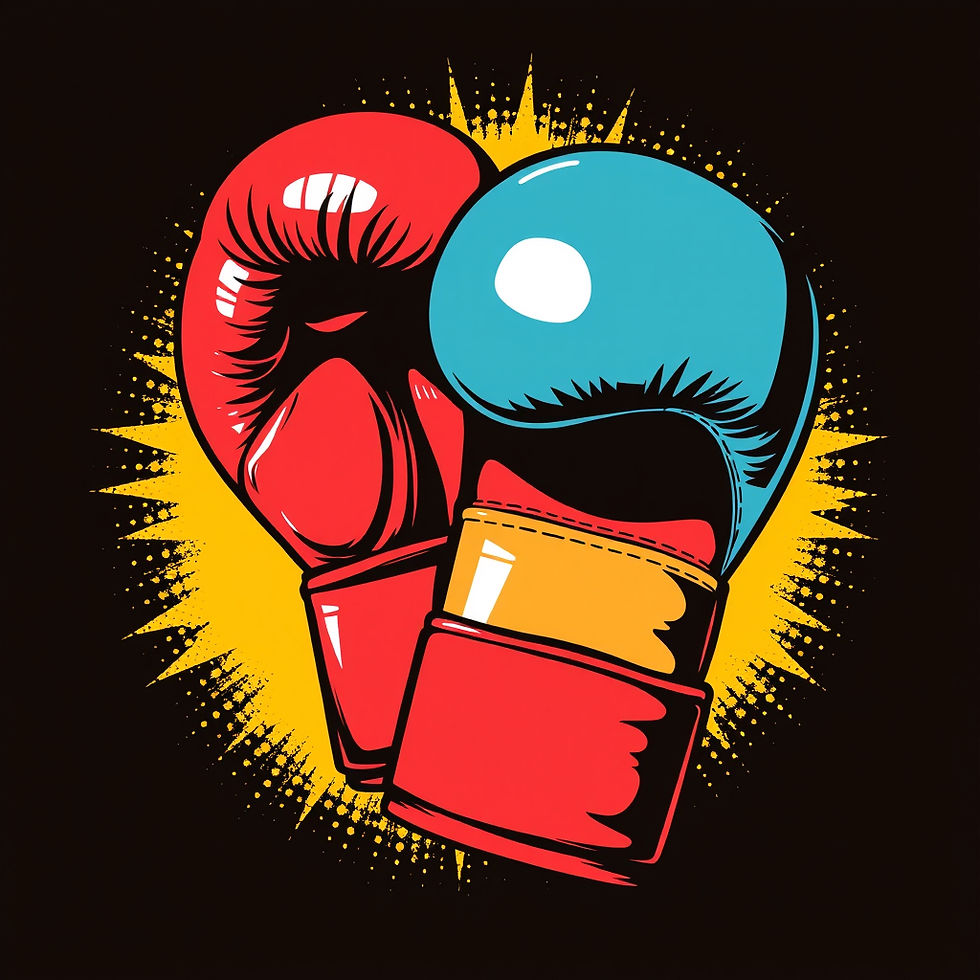The 3 types of conflict your story needs (and how to layer them)
- Krysia S.
- Sep 5
- 3 min read
Let’s face it: conflict is the heartbeat of story.
Without it, there’s no tension, no stakes, no reason to turn the page.

But here’s the mistake many writers make—especially in early drafts:
They rely on just one type of conflict.
Maybe it’s all external action.
Maybe it’s all brooding internal turmoil.
Maybe the tension between characters carries every scene.
And while any one of these can be compelling on its own, the most powerful stories layer all three.
Let’s break them down—and explore how they work together to create rich, emotionally gripping fiction.
1. internal conflict: the struggle within
This is your character’s inner battle. Their fears, doubts, wounds, beliefs, desires, and contradictions. Internal conflict makes your character human.
It’s the “should I or shouldn’t I?” The voice in their head. The guilt they carry. The lie they believe. The tension between who they are and who they want to be.
Why it matters
Internal conflict gives emotional depth. It’s what lets readers feel your story.
Examples:
Katniss Everdeen doesn’t just battle the Capitol—she wrestles with what kind of symbol she’s becoming.
Elsa in Frozen battles fear and shame around her powers.
Bruce Wayne is torn between justice and vengeance.
2. interpersonal conflict: the tension between characters
Also called relational conflict, this involves clashes between people—protagonist vs. ally, love interest, rival, mentor, family member, or antagonist.
It’s the tension in the dialogue.
The argument that reveals a wound.
The betrayal that shifts the plot.
The misunderstanding that creates chaos.
Or the emotional distance that needs bridging.
Why it matters
Interpersonal conflict tests your character’s values, emotional growth, and trust. It’s also a fantastic tool for revealing internal conflict in action.
Examples:
Elizabeth Bennet and Mr. Darcy (Pride and Prejudice)
Peter Parker and Tony Stark in Spider-Man: Homecoming
3. external conflict: the obstacles outside your character
This is the visible, tangible conflict:
A race against time
A murder to solve
A villain to stop
A mountain to climb
A competition to win
External conflict forms the spine of your plot. It’s the “what happens.”
Why it matters
It creates momentum and stakes. It puts pressure on your character—which, in turn, surfaces their inner and interpersonal conflict.
Examples
The Hunger Games arena
Frodo’s quest to destroy the ring
A heist gone wrong
A deadly illness, war, or natural disaster
how to layer all three
The magic happens when these conflicts interact.
Take The Hunger Games:
External: Katniss must survive the arena.
Interpersonal: She struggles to trust Peeta, fears for Rue, and navigates her complicated feelings for Gale.
Internal: She grapples with being a pawn of the Capitol, her moral boundaries, and the growing pressure of becoming a symbol.
Each layer enhances the others. The arena pressures her relationships. The relationships trigger inner turmoil. The turmoil affects how she plays the game.
When one layer shifts, the others ripple.
signs your story might be missing a layer
Your plot moves fast, but readers don’t feel emotionally connected
Your characters feel “stuck” or one-dimensional
Scenes feel repetitive or don’t escalate tension
There’s drama, but no deeper theme or emotional weight
If any of these sound familiar, try checking which layer of conflict is underdeveloped—and add depth there.
writing prompts to deepen conflict
What fear or wound is holding my protagonist back? (internal)
Who challenges or reflects my protagonist’s flaw—and how? (interpersonal)
What’s the one external force threatening everything they care about? (external)
Then ask: How do these conflicts collide and escalate over the course of the story?
Great stories don’t rely on just one kind of conflict.
They layer all three—internal, interpersonal, and external—to create a narrative that’s not just compelling, but emotionally resonant.
So the next time you revise a scene, ask yourself: Which types of conflict are present here—and how can I add another?
Because conflict isn’t just what happens.
It’s why it matters.




Comments